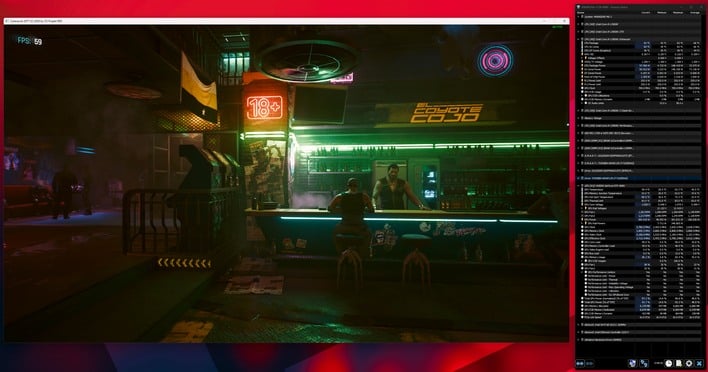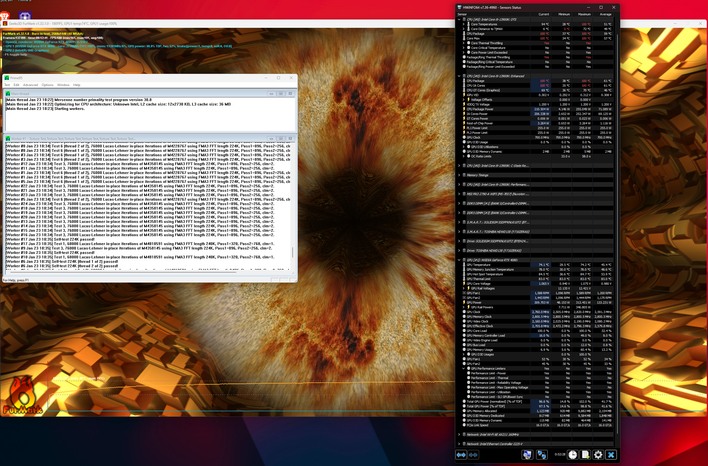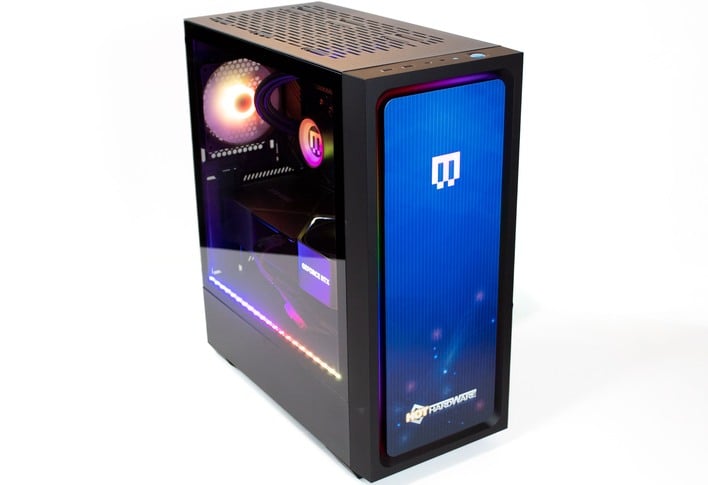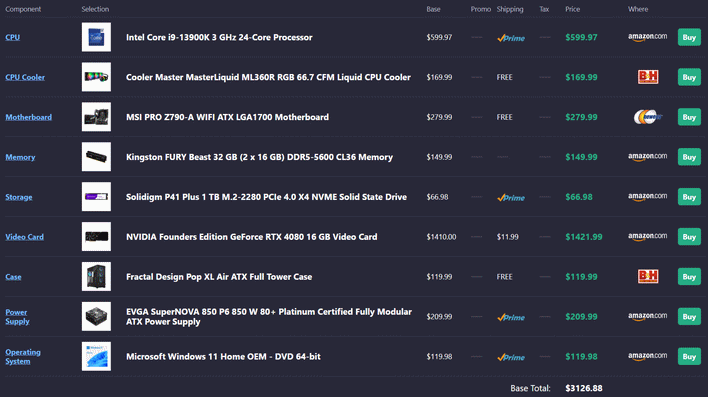Maingear MG-1 Review: A Mighty, Beautiful Boutique Gaming PC
Maingear MG-1: Power, Thermals, And Our Review Conclusion
Thermals and power consumption go hand-in-hand with a system's performance. At a base level, it would be easy to say "more power equals more performance," but that's not always the case. Despite this section being toward the end of the review, we're careful to examine the thermals and power consumption of a system before we do our benchmarks because it colors our impression of the machine's capabilities.
Total System Power Consumption And Thermal Output Measurements
For idle power, we simply let the system rest at the Windows 11 desktop. The idle power figure in the chart below is not the absolute lowest value we recorded, but represents the average of low values over a 1 minute period.
For load power, we're skipping the usual Prime95-and-Furmark torture test in favor of a more realistic and practical workload: gaming. While the aforementioned torture test is indeed brutal on power supplies and cooling apparatus, it really isn't representative of the kind of power consumption a system like this will actually require in day to day use.
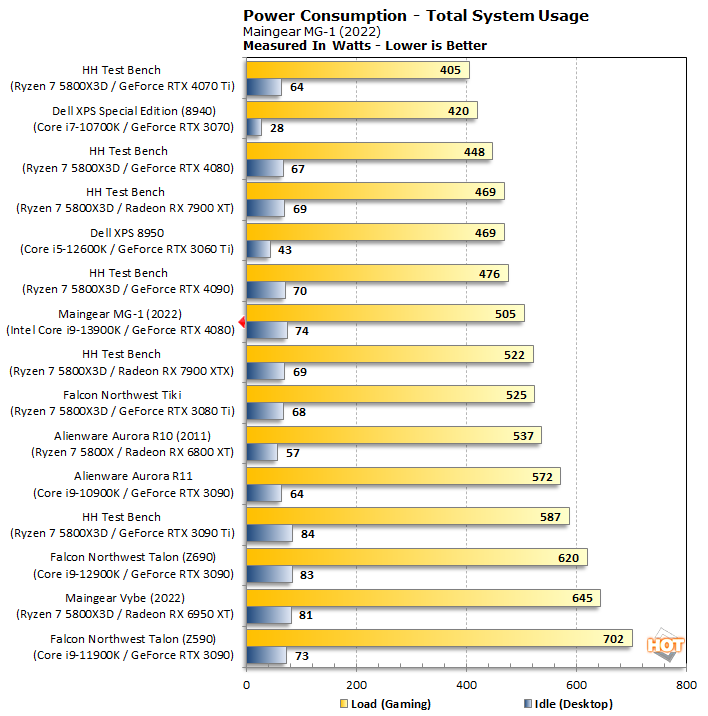
You've probably read a lot about how the Core i9-13900K is a power-hungry beast, and about how NVIDIA's Ada Lovelace GPU architecture is massive and thirsty in equal measure. The reality is, that's only true in the worst case for each architecture. Under typical usage, even these potent parts are actually quite modest eaters; a gaming power consumption of 505 watts comes fairly well in the middle of the pack, and lower than last-generation systems with this class of hardware.
However, the idle power of the MG-1 is a little high. We're willing to chalk that up to the absolute light-show that shines out the side of this system at all times by default. You can turn all that stuff off with the MSI motherboard software that came pre-installed, but it looks so nice that it's honestly kind of a shame to do so.
As far as thermals go, we tested a variety of titles on the MG-1 to see which would produce the highest temperatures. The most reliably hot games included Far Cry 6, F1 22, and Cyberpunk 2077, so those are the ones we used. Despite looping game benchmarks for more than an hour, we never could get the machine to heat up all that much. The highest temperatures we recorded on the CPU were just 83°C, and the GPU topped out at a relatively frosty 73°.
Given that, you will probably be unsurprised to read that the fans in the system never went above half of their duty cycles, and as such, the system runs almost silently as a result. I, unfortunately, didn't have access to a sound pressure level meter to get precise measurments, and smartphone sensors aren't sensitive enough to pick up whatever sound the MG-1 is making. For all intents and purposes, it is silent, at least while gaming.
On the other hand, while running our torture test for reliability purposes, the system got pretty toasty, as you'd expect. We noticed that the Core i9-13900K hit its thermal peak almost instantly under virtually any multi-core workload. This absolutely isn't a fault of Maingear or Cooler Master, as we and other outlets have observed the same thing elsewhere.
When you install a "K" series CPU into a "Z" series motherboard and enable XMP to get the full memory speed, the board will usually uncap the CPU's power limit, and that's what results in these toasty temperatures. It won't hurt the CPU in the short term (and probably not even in the long term), but it could be something to be aware of if you're going to be buying one of these and running Blender on it 24 hours a day, 7 days a week.
Meanwhile, the GeForce RTX 4080 remains largely unbothered even under a Furmark test, settling down at 74°C after nearly an hour. The ridiculously-oversized cooler has been the topic of much derision around the web, so we won't re-tread that ground, but it does serve the purpose of keeping your GPU cool in absolutely any circumstances.
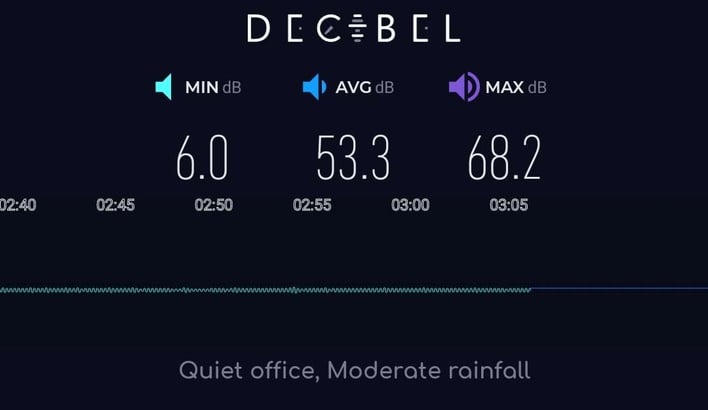
Under this gruesome gantlet, the system's fans do spin up and we manage to get a conclusive result on our audio meter: around 53 dB, which our app helpfully informs us is around the volume level you'd expect in a quiet office. Indeed, the sound coming out of the machine even as it cranks away on Prime95 and Furmark simultaneously can only be described as "mdoest". Most people would be very unlikely to even notice it, and remember: this is an unrealistic test scenario to begin with.
Maingear MG-1 Conclusions and Final Thoughts
There's really no argument at this point: the Maingear MG-1 is the fastest pre-built PC we've tested to date. Its top-end Intel CPU and screaming-fast Geforce RTX 4080 made mincemeat of our benchmarks, and stood up to every test we could throw at it. Outside of contrived worst-case scenarios, there's nothing you're going to serve up on this machine that it won't handle.
You'll notice that there's nothing but 4K benchmarks in this review. That's because there's almost no point in buying a machine like this if you're not going to plug it into a 4K display, or unless you're an ultra-high frame rate eSports gamer. The GeForce RTX 4080 goes wasted on lower-resolution monitors if you're not pushing a 1440p or 1080p display north of 120Hz, and even a 60Hz 4K monitor isn't harnessing the full might of NVIDIA's current-generation x80 GPU.
Build And Configure A Maingear MG-1 @ Maingear.com
The MG-1 comes about as close as any pre-built PC can to being flawless. Sure, we'd like a bigger and faster SSD, but what we tested is by no means paltry—and thanks to the DIY origins of the system, you can easily crack it open and add more storage to its copious expansion capacity yourself. We'd like to see a Pro version of Windows too, but that's the quibbliest of nitpicks. We could whine about the size and heft of the system, but it's a gaming PC. Generally speaking, you don't buy a gaming desktop if you don't want a big, burly computer.
With that, then, there's only really one consideration left: the price. Maingear asks $3,499 USD for this machine, as configured. That's a hefty price, but this is a hell of a computer, too. We parted out fundamentally the same system on a popular price aggregator and came out with a price of $3,127 before shipping.
Sure, that's technically cheaper, but you've still got to put everything together with immaculate cable management, etc.—and that price doesn't include the extra RGB bling nor the system's warranty with lifetime free labor. If something goes wrong with your DIY rig, you've got to track down invoices and RMA the parts yourself. If something goes wrong with your MG-1, just call Maingear.
All in all, we've been incredibly impressed with the Maingear MG-1, and regular readers of HotHardware will know that this author isn't impressed easily. When the only complaints you can muster are minor nitpicks, it's time to hand out our coveted Editor's Choice award.


